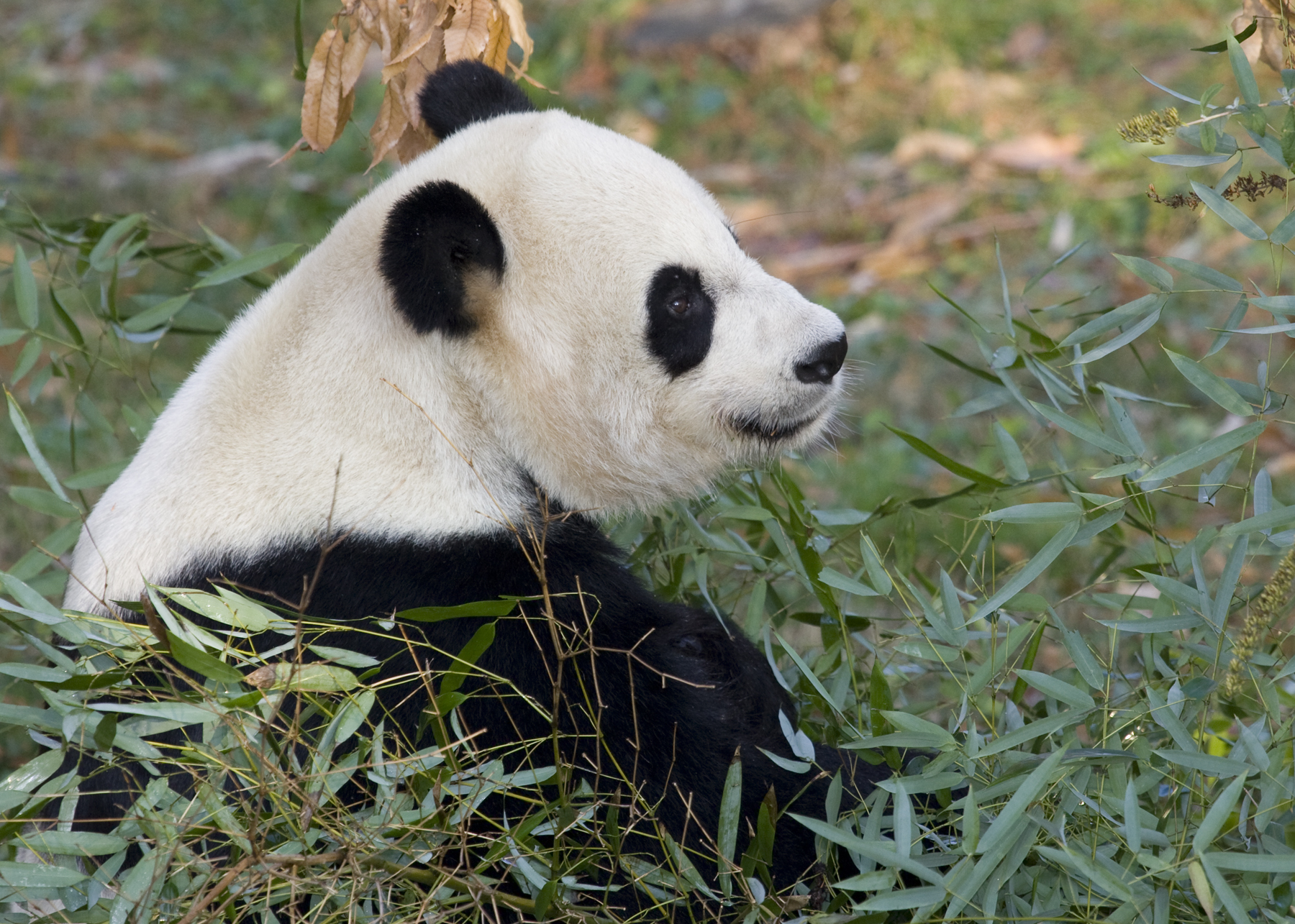2011 Giant Panda Mating Season Begins at Smithsonian’s National Zoo
The National Zoo’s giant panda mating season began early for the third consecutive year with female Mei Xiang (may-SHONG) and male Tian Tian (tee-YEN tee-YEN) attempting to mate Jan. 29. Mei Xiang continues her January ovulation pattern that started in 2009; historically her estrus occurred in March or April.
In accordance with the new Giant Panda Cooperative Research and Breeding Agreement, reproductive experts from the China Conservation and Research Center for the Giant Panda in Wolong and experts from the Smithsonian Conservation Biology Institute will collaborate on the breeding plan for Mei Xiang and Tian Tian for 2011 and 2012. Tang Chunxiang, the Chinese Center’s chief veterinarian, flew here last week to work with the Zoo’s panda team.
On Jan. 29, Tang, alongside Zoo scientists and veterinarians, performed the first of two nonsurgical artificial inseminations on Mei Xiang after it was determined that competent natural breeding between the pair had not occurred. Due in part to the bears’ rigorous attempts at natural mating, efforts to retrieve semen from Tian Tian were not successful. The team decided to thaw high-quality semen of Tian Tian collected and frozen in 2005. Mei Xiang was then anesthetized for the procedure. A second artificial insemination was performed Jan. 30.
“Both procedures went extremely well and the staff at the Zoo was happy to collaborate with Dr. Tang,” said Pierre Comizzoli, a research physiologist at the Zoo. “Comparing our process and Dr. Tang’s in China, we found our insemination techniques were very similar. Both countries really do have common practices in giant panda reproduction. We are all hopeful for a cub this spring.”
Giant pandas have one very brief breeding season each year, with only a day or two of actual mating. The early start of these past three seasons is unusual, but the expertise of the Zoo’s staff enabled them to immediately identify signs of this early reproductive activity and prepare natural mating as well as a possible artificial insemination.
As early as two weeks ago, the Zoo’s animal care team noticed Mei Xiang exhibiting signs of estrus, including distinctive vocalizations that are associated with mating season. Staff immediately began monitoring the hormone levels in her urine, which allowed them to predict when she was in peak estrus and most fertile. Timing is crucial—female giant pandas only have about one day a year in which conception can occur.
There is no conclusive study that indicates what induces the breeding season in giant pandas. Although scientists know that they mostly breed in late winter to early spring, it is not known if the onset of reproductive activity is triggered by increasing day length, temperature or some other environmental factor.
The Zoo took measures to provide optimum conditions for both pandas prior to mating. Automatic lighting and excessive noise were kept at a minimum at the panda house afterhours, which included closing the exhibit to visitors during the Zoo’s evening holiday event, ZooLights last month.
In addition, keepers worked for several months on the physical stamina of the bears in preparation for mating season. Tian Tian underwent behavioral training to stand tall on his hind legs by receiving food treats to build stronger leg muscles; Mei Xiang was trained to lie across a large log in her enclosure to improve her breeding positioning.
“We wanted them to be well-rested and in the best possible shape physically to breed naturally,” said curator Brandie Smith. “And if there was anything we could do to enhance that success, then we did our best to apply it.”
Tang is an expert in breeding pandas in China. He worked with Mei Xiang and Tian Tian to encourage natural breeding over several days; however, the pair never successfully mated. Therefore, Zoo staff separated Mei Xiang and Tian Tian before performing the artificial insemination. They will remain separated for the next few months, until Mei Xiang either delivers a cub or Zoo scientists determine that she is not pregnant. Keeping the pandas separated will reduce the risk of increased stress-hormone levels in Mei Xiang, which could jeopardize a developing embryo.
Panda gestation typically lasts from 90 to 185 days. Veterinarians and scientists will monitor Mei Xiang’s hormone levels and perform ultrasounds to determine if she is pregnant. At present there is no way of knowing for sure if she conceived; hormone levels are the same regardless of whether she is pregnant or pseudo pregnant.
Mei Xiang and Tian Tian have produced one cub, Tai Shan (tie-SHON), who was born July 9, 2005, as a result of artificial insemination. Tai Shan now resides at the China Conservation and Research Center for the Giant Panda in Wolong, China.
# # #
SI-51-2011


